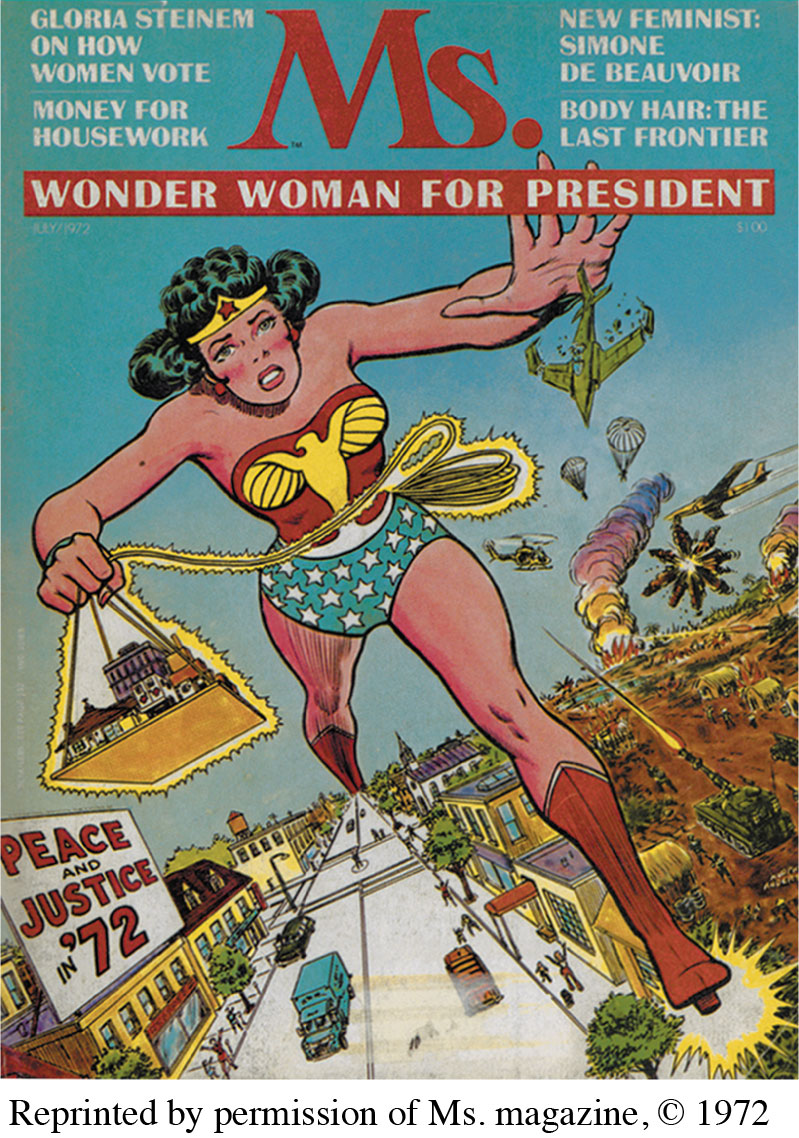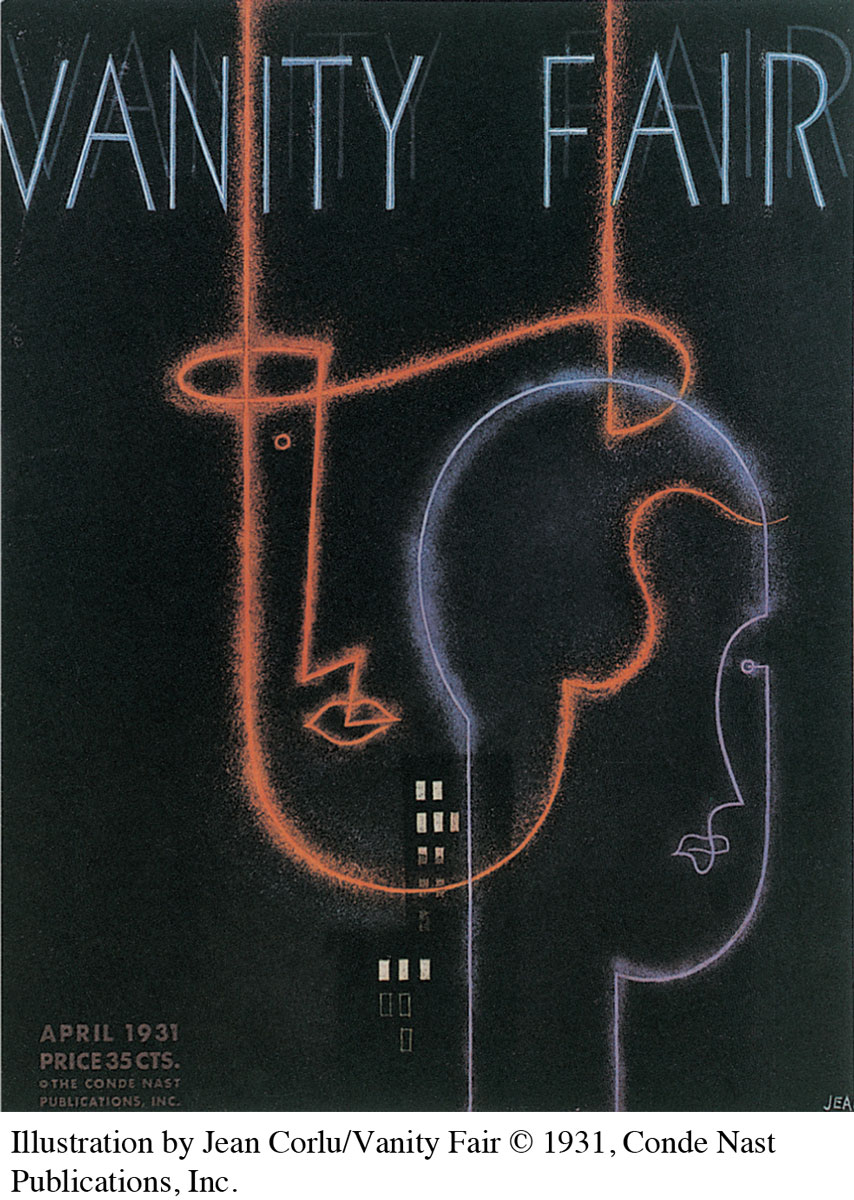The Economics of Magazines
Whatever their circulation size, specialty, or format (print or online), magazines must bring in money (e.g., from advertising revenues and subscription fees) to fulfill their mission and compete with other media. For instance, to combat loss of ad dollars to TV, many magazines began publishing special editions, which guaranteed advertisers access to their target markets. These competitive strategies fueled the massive growth of magazines despite competition from television, but now magazines face new challenges from Web sites, blogs, and social media, all competing for audiences and ad dollars. Magazines must also invest money to carry out the business processes essential to their operations—such as content development, production, sales and marketing, and distribution. To extend their reach, lower their costs, and beef up their budgets, many magazines have merged into large chains, often backed financially by major media conglomerates. Even large chains, however, are not immune to the economic reality that many well-known magazine titles continue to cease production entirely.
Money In
Magazine publishers make money through two primary means: advertisers and newsstand/subscription sales.
Advertising
Consumer magazines rely heavily on advertising revenue. The more successful the magazine (that is, the higher its circulation), the more it can charge for ad space. A top-rated consumer magazine might charge as much as $320,000 for a full-page color ad and $89,000 for a one-third-page, black-and-white ad. The average magazine contains about 50 percent ad copy and 50 percent editorial content, a ratio that has remained fairly constant for the past twenty-five years.
In some cases, advertisers can strongly influence editorial content. For example, some companies have canceled their ads after a magazine printed articles that were unflattering toward or critical of the firm or its industry.6 For editors, the specter of a major advertiser bringing its business elsewhere can present a dilemma: Should the magazine shift its editorial point of view to avoid offending advertisers and thus retain much-needed ad revenues? Or should it continue publishing the same types of articles, hoping that if some advertisers are driven away, others that agree with the magazine’s viewpoint will come in and take their place?
In addition to grappling with this dilemma, magazines have developed innovative strategies for retaining advertisers. For instance, as television stations began generating more national ad revenues in the 1950s, magazines started introducing different editions to guarantee advertisers a specific audience—and thus win them back. There are several types of special editions:
Regional editions are national magazines whose content is tailored to the interests of specific geographic areas. For example, Sports Illustrated often prints five regional versions of its College Football Preview and March Madness Preview editions, picturing a different local star on each of the five covers.
In split-run editions, the editorial content remains the same, but the magazines include a few pages of ads purchased by local or regional companies. Most editions of Time, Newsweek, and Sports Illustrated, for instance, contain a number of pages reserved for regional ads.
Demographic editions target particular groups of consumers. In this case, market researchers identify subscribers primarily by occupation, class, and zip code. Time Inc., for example, developed special editions of Time magazine for top management, high-income zip-code areas, and ultrahigh-income professional/managerial households.
Newsstand and Subscription Sales
Magazines also make money from single-copy sales at newsstands and from subscription sales. (Some online magazines charge a subscription fee in addition to making money from advertisers.) Toward the end of the general-interest magazine era in 1950, newsstand sales accounted for about 43 percent of magazine sales, and subscriptions constituted 57 percent. Today, newsstand sales have fallen to 12 percent, whereas subscriptions’ contribution to sales has risen to 88 percent.
One tactic used by magazine circulation departments to increase subscription sales is to encourage consumers to renew well in advance of the date on which their subscription is set to expire. Another strategy is the evergreen subscription—which is automatically renewed on a credit card unless the subscriber requests that the automatic renewal be stopped.
Controlled circulations can boost revenue from ad sales. Here’s how it works: A business or some other type of organization (such as an airline or a professional association) sponsors the magazine, and the published issues are given free to readers (such as airline passengers or members of the professional association). Advertisers are often interested in buying ad space in such magazines, attracted by the notion of a captive audience.
Money Out
To operate, magazines must spend money on resources essential to their business, such as development of content (including staff writers’ salaries and freelance writers’ fees), production (including desktop-publishing technology needed for designing and laying out each issue, and paper and printing costs for print versions of magazines), sales and marketing, and distribution (including postage for printed periodicals).
Content Development
The lifeblood of any magazine is the editorial department, which produces the periodical’s content, excluding advertisements. Like newspapers, most magazines have a chain of command that begins with a publisher and extends down to the editor in chief, the managing editor, and a variety of subeditors. These subeditors oversee such editorial functions as photography, illustrations, reporting and writing, and copyediting. Magazine writers generally include contributing staff writers, who are specialists in certain fields, and freelance writers—self-employed professionals assigned to cover particular stories or regions. Many magazines—especially those with small budgets—also accept unsolicited articles from freelancers to fill their pages, often paying the writers a flat fee or an honorarium in return for their work.

Production
A magazine’s production and technology department maintains the computer hardware and software necessary to design each issue of the magazine (that is, to select typefaces and styles) and to lay out each issue (place the text and graphics together on each page spread). Staff or freelance subeditors specializing in design and layout are often assigned to these tasks.
A small newsletter or magazine can be launched quite cheaply with the use of computer-based desktop publishing, which enables an aspiring publisher-editor to write, design, lay out, and print the publication or post it online. Yet despite the rise of inexpensive desktop publishing, most large commercial magazines still operate several departments, which employ hundreds of people.
Production costs also include paper and printing for those magazines published in print format. Because such magazines are on a weekly, monthly, or bimonthly publication cycle, rather than coming out daily, it is not economically practical for their publishers to maintain expensive print facilities. Instead, many national magazines digitally transport files containing their print-ready issues to regional printing sites for the insertion of local ads and for faster distribution.
Sales and Marketing
Magazine publishers must also maintain a sales force and a marketing staff to focus on increasing subscriptions and attracting more advertisers. These professionals’ responsibilities often include gathering and analyzing subscriber data to see who’s renewing their subscriptions (and why) and who’s letting their subscriptions lapse (and why), as well as designing marketing campaigns to attract new readers.
Distribution
Magazines also have to spend money on distribution. This function encompasses maintenance of subscriber mailing lists, postage for shipping published issues of print-version magazines to subscribers, and possibly fees for displaying and selling published issues through newsstands or at supermarket checkout lines. This is an area in which online versions of magazines have an advantage, although hosting, maintaining, and promoting an online magazine introduces its own set of distribution challenges.
Major Magazine Chains
To survive in an increasingly competitive marketplace, many magazines have merged into large, powerful chains, often backed by deep-pocketed media conglomerates. This strategy provides more funding for magazines and enables them to lower their costs—for example, by centralizing basic functions such as content development or production.

In the commercial magazine industry, large companies or chains have come to dominate the business. Condé Nast is one example. A division of Advance Publications, which operates the Newhouse newspaper chain, the Condé Nast group controls several upscale consumer magazines, including Vanity Fair, GQ, and Vogue. Time Warner, one of the world’s largest media conglomerates, also runs a magazine subsidiary, Time Inc. This top player among magazine-chain operators boasts about thirty major titles, including People and Sports Illustrated.
Many large publishers—including the Hearst Corporation, the Meredith Corporation, Time Inc., and Rodale Press—have generated additional revenue by creating custom-publishing divisions that produce limited-distribution publications for client companies. These publications, sometimes called magalogs, combine the style of glossy magazines with the sales pitch of retail catalogues. For example, a large international corporation might pay a publisher to produce a magalog for its employees on how to manage their 401(k).
A number of major magazines (Reader’s Digest, Cosmopolitan, Newsweek, and Time are good examples) have further boosted revenues by launching international editions in several languages. However, most U.S. magazines are local, regional, or specialized and therefore aren’t readily exportable to other countries. Of the approximately twenty thousand magazines now published in the United States, only about two hundred circulate routinely in the world market. Moreover, even the best-known and most-circulated magazines, backed by the largest companies, may not survive in the marketplace. For example, Condé Nast shut down its popular Gourmet and Modern Bride magazines at the end of 2009, though the Gourmet brand name continues to be used for occasional online and print publications.